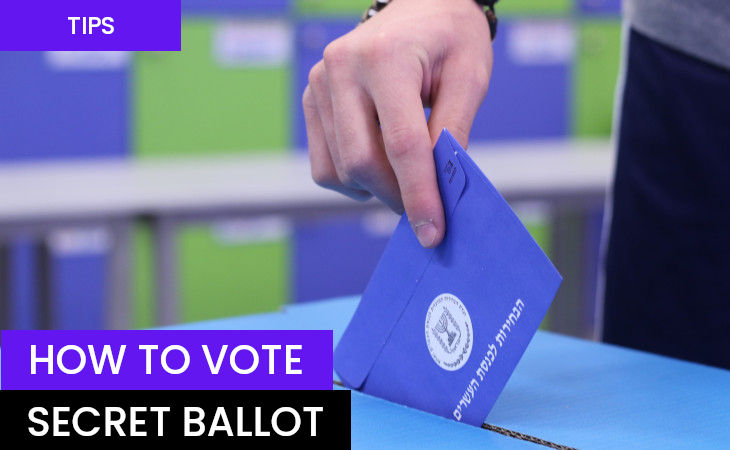Las regulaciones legales en la mayoría de los países permiten que las juntas de accionistas, las juntas generales anuales y el trabajo de los consejos de administración y supervisión se lleven a cabo sin necesidad de una reunión física. El legislador permite la votación en línea.
Un voto secreto no puede ser garantizado por un notario.
Un voto secreto no puede ser garantizado por un notario público, ya que teniendo información sobre el método de votación de una persona específica, no podría divulgarla debido a la obligación de secreto. También es necesario cumplir con los demás requisitos legales relacionados con la votación en la forma tradicional (por ejemplo, notificación adecuada de la reunión, entrega de una versión escrita de las resoluciones, etc.).Entonces, ¿cómo se lleva a cabo una votación secreta en línea?
El voto electrónico es confidencial cuando ninguno de los votantes sabrá cómo votó el otro. Se recomienda utilizar el llamado tercero de confianza - receptor de votos. Por lo general, se requiere una solicitud de voto secreto adecuada. A veces, los números de resoluciones y respuestas del presidente se codifican (encriptan) manualmente. El voto de cada participante se transfiere de forma codificada para calcular el resultado final de la votación por parte del destinatario de los votos. Por ejemplo, una resolución con el número 1 se marca como "#", con el número "2", por ejemplo, "&", etc. Sin embargo, un voto a favor, por ejemplo, "r", y en contra como "5" (diferentemente por cada voto). Por lo tanto, el destinatario de los votos no sabe cómo votaron los participantes individuales, y su tarea es solo calcular los resultados de la votación en forma codificada. Luego, el presidente de la reunión los decodifica de acuerdo con una clave conocida y anuncia los resultados.Sin embargo, la solución de codificación manual tiene varias desventajas:
¿Cómo abordan las empresas comerciales el voto a distancia?
La mayoría de las empresas simplemente no realizan reuniones remotas, especialmente votaciones secretas en línea. Desafortunadamente, esto genera costos por la presencia física de los votantes por su dispersión geográfica, y en ocasiones es imposible votar por las limitaciones de la pandemia.Muchas entidades utilizan soluciones que no cumplen los requisitos establecidos en las leyes, exponiéndose al riesgo de recurso contra las resoluciones adoptadas.
A menudo se utilizan:
- soluciones de encuestas existentes
- formularios creados en herramientas populares de videoconferencia
- soluciones no completamente adaptadas de diferentes proveedores, generalmente transformadas de sistemas de votación en unidades de gobierno local
| Descripción de la amenaza | Solución en el sistema voto pri |
| Integridad | |
| Por lo general, un sistema de videoconferencia y un sistema de votación son dos sistemas no integrados. Esto provoca la falta de credibilidad, por ejemplo, de la videoidentificación del voto, porque no se tiene certeza de que la persona que se ve en la transmisión de la imagen sea la misma persona que votó. Por la misma razón, existen dudas sobre la corrección del cómputo del quórum requerido. La suma de los votos emitidos no podrá constituir la base para determinar el quórum. El elector tiene derecho a estar presente y no votar. | El sistema de videoconferencia está totalmente integrado con el sistema de votación. De hecho, el sistema de comunicación por video se ha ampliado para incluir funciones de votación. Un inicio de sesión y consistencia completa de video, voz, grabación y votos. Cuando comienza la votación, se verifica el quórum y se crea una lista de asistencia (para esta votación). |
| Seguridad | |
| Incluso las soluciones líderes envían contraseñas a los usuarios en forma abierta, correos electrónicos sin cifrar, y el acceso a la transmisión de video está protegido solo por un enlace y un código PIN compartido por todos. Esto crea un riesgo no solo de acceso no autorizado a la reunión, sino también de una votación no autorizada. | Un usuario delprivote sistema recibe un enlace con una invitación para registrarse. Define de forma independiente su contraseña y acepta todos los documentos exigidos por la ley (política de procesamiento de datos personales, confirmación de acceso exclusivo a la dirección de correo electrónico y al número de teléfono y, si el votante así lo desea, un documento creado por la entidad votante, por ejemplo reglas de votación). La conexión está cifrada con un certificado SSL y las últimas soluciones técnicas utilizadas (incluidos HTML5 y WebRTC) garantizan la seguridad y confidencialidad de los datos transferidos. |
| Consistencia e inmutabilidad de los datos | |
| Los formularios de votación creados en uno de los populares programas de videoconferencia no ofrecen ninguna garantía de confiabilidad y corrección. Pueden ser modificados en cualquier momento y nadie puede garantizar que serán probados de manera competente. ¡Algunos de los proveedores incluso se jactan de la posibilidad de cambiar los documentos adjuntos a la reunión en cualquier momento, e incluso de la posibilidad de cambiar los parámetros de votación después de su inicio o finalización! | privote .net sp. z oo es totalmente responsable de la exactitud de los resultados de la votación, que (previa solicitud) confirma con su sello digital calificado. La modificación de los parámetros de reunión y votación queda bloqueada en el momento de su inicio. Solo es posible agregar nuevos votos si se presentan mociones adicionales durante la reunión o si es necesario reevaluar la votación. |
| Funcionalidad para votaciones complejas | |
| A menudo no hay forma de definir votos más complejos. Por ejemplo, mayoría calificada 2/3 con quórum 3/4 excluyendo a ciertos votantes (por ejemplo, durante la votación en asuntos de aprobación de la gestión del Consejo de Administración). | El sistema está preparado para todo tipo de votaciones (abiertas, secretas, simples, absolutas, mayoría calificada, quórum y exclusión de votantes). |
| Verificación de votos secretos por parte de los votantes | |
| No es un requisito formal, pero dicha funcionalidad aumenta la comodidad y confianza de los votantes, asegurando que el voto secreto sea debidamente calificado. | privotees la única solución que permite al elector verificar su voto secreto sin violar el secreto del voto en sí. Esto es posible gracias a nuestra tecnología patentada Smart Vote ID, durante el procedimiento de protección de patentes. |
La elección de la solución utilizada para la votación en línea es importante no solo en términos de eficiencia y velocidad de la reunión. También se debe tener en cuenta el riesgo de apelar las resoluciones ante los tribunales por parte de los accionistas disconformes con la decisión .
Un programa de votación seleccionado incorrectamente y realizado incorrectamente, por ejemplo, una junta general remota de accionistas o cualquier reunión remota (del consejo de administración, del consejo de supervisión, etc.) proporciona una excusa innecesaria para disputas sobre la validez de las resoluciones.
El voto secreto en línea ya se puede realizar utilizando los servicios del proveedor adecuado.
Le animamos a que utilice el voto o verifique otras soluciones, prestando atención a los aspectos enumerados en la tabla anterior.
Si es tan bueno, ¿por qué es tan malo? ¿Cómo votar a distancia?
A menudo, en la prensa o la televisión hay informes de que una organización (por ejemplo, un partido político) o empresa no puede adoptar algunas resoluciones porque se refieren a asuntos personales y no es posible votar mediante votación secreta en línea. Dichos informes parecen extraños porque ya existen regulaciones legales apropiadas que permiten este tipo de votación. También existen soluciones técnicas y aplicaciones para el voto secreto.
¿Entonces, cuál es el problema?
Parece que el problema radica en las reticencias a este tipo de votaciones y cierta resistencia mental y falta de confianza, que es importante precisamente en el caso de la votación secreta en modalidad remota.
Es más fácil entender este mecanismo cuando miramos la siguiente infografía.

Como puede ver, la diferencia entre la votación secreta tradicional y la votación secreta en línea es enorme. Hay considerables desproporciones en la capacidad de controlar su curso adecuado.
En la versión tradicional, los votantes ven todas las etapas y pueden asegurarse de que todo el proceso sea correcto.
En la versión online, tienen que confiar en que todo el proceso ha ido sobre ruedas y que los resultados son reales.
La criptografía moderna ha permitido durante mucho tiempo dicha transferencia de información para garantizar su confidencialidad.
También es posible verificar si un voto ha sido calificado para el grupo correcto. El problema es que los mecanismos y algoritmos que permiten la votación secreta en línea solo los entienden un puñado de ingenieros, criptólogos y matemáticos.
Bueno, la criptología, la inteligencia artificial y las tecnologías de cadena de bloques no servirán de nada si no convencen al destinatario medio, que podrá controlar de forma independiente la corrección de la emisión de un voto, como en el caso de la votación tradicional.
Esta deficiencia en la tecnología en línea provoca resistencia mental y desconfianza de los votantes en los sistemas de votación remota.
Muchos directivos de empresas simplemente no saben cómo votar en línea de forma segura y fiable. Las plataformas de votación en línea son nuevas en el mercado de herramientas para entidades de derecho comercial y faltan calificaciones y opiniones confiables.
¿Es posible solucionar el problema de la verificación del voto emitido en el caso del voto secreto online?
Existe una creencia bastante extendida de que no existe una tecnología que proporcione tanto secreto, verificabilidad y simplicidad comprensible para el votante promedio.Parece ser cierto en el caso de las elecciones generales.
Aquí, la escala de votación es enorme y el riesgo de abuso potencial es significativo.
Incluso asegurar los votos con un código SMS es bastante fácil de eludir. Si ya resolvemos todos los problemas técnicos y garantizamos el secreto y la verificabilidad, al final habrá acciones humanas ordinarias, como el hecho de que se dé acceso a la votación a una persona no autorizada. Los medios de comunicación informaron sobre tales casos en los parlamentos de varios países.
Tenga en cuenta que la forma tradicional de elecciones está protegida por muchas características de seguridad, como la grabación de la votación, la comisión electoral, los enlaces sindicales, los observadores externos independientes, etc. Incluso la transmisión de protocolos de votación preparados a través de Internet presenta un riesgo de manipulación. Sin embargo, en el caso de reuniones y votaciones a distancia en entidades de derecho comercial, organizaciones sociales, políticas o de gobierno local, es posible resolver el problema de la verificación del voto secreto emitido por medios de comunicación electrónica.
Una de esas soluciones es SVID (Smart Vote ID), laprivote tecnología patentada (pendiente de protección de patente).
Permite una verificación en línea sencilla, comprensible para un usuario medio y fiable de una voz secreta sin violar el secreto de la votación en sí.
Un elemento adicional que permite eliminar la desconfianza de los votantes en los sistemas de votación en línea es la diferencia fundamental en la definición legal del secreto de estos votos.
En el caso de las entidades de derecho comercial, el voto secreto significa secreto solo para los participantes en la votación .
En otras palabras, está permitido gestionar el voto por una entidad externa, es decir, el llamado tercero de confianza o receptor del voto. Esta es la función de privote .net LTD.
Muchas entidades y organizaciones ignoran este requisito, encargando a sus departamentos de TI la preparación de votaciones online con el uso de herramientas gratuitas o no adaptadas.
Estos sistemas no suelen ser probados ni verificados de forma formal, y el hecho de que sean elaborados por un empleado de la empresa viola el principio de receptor independiente de los votos.





